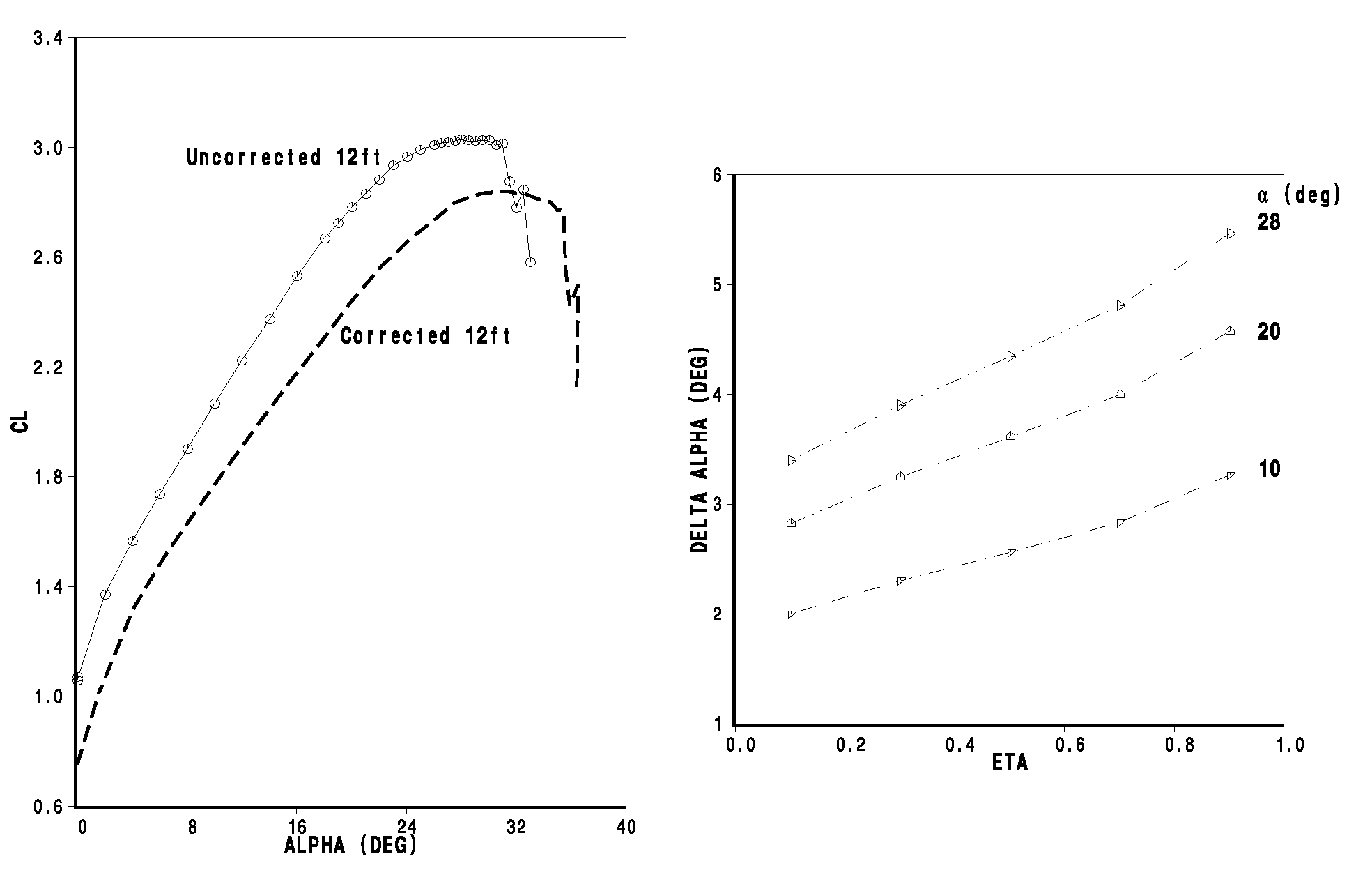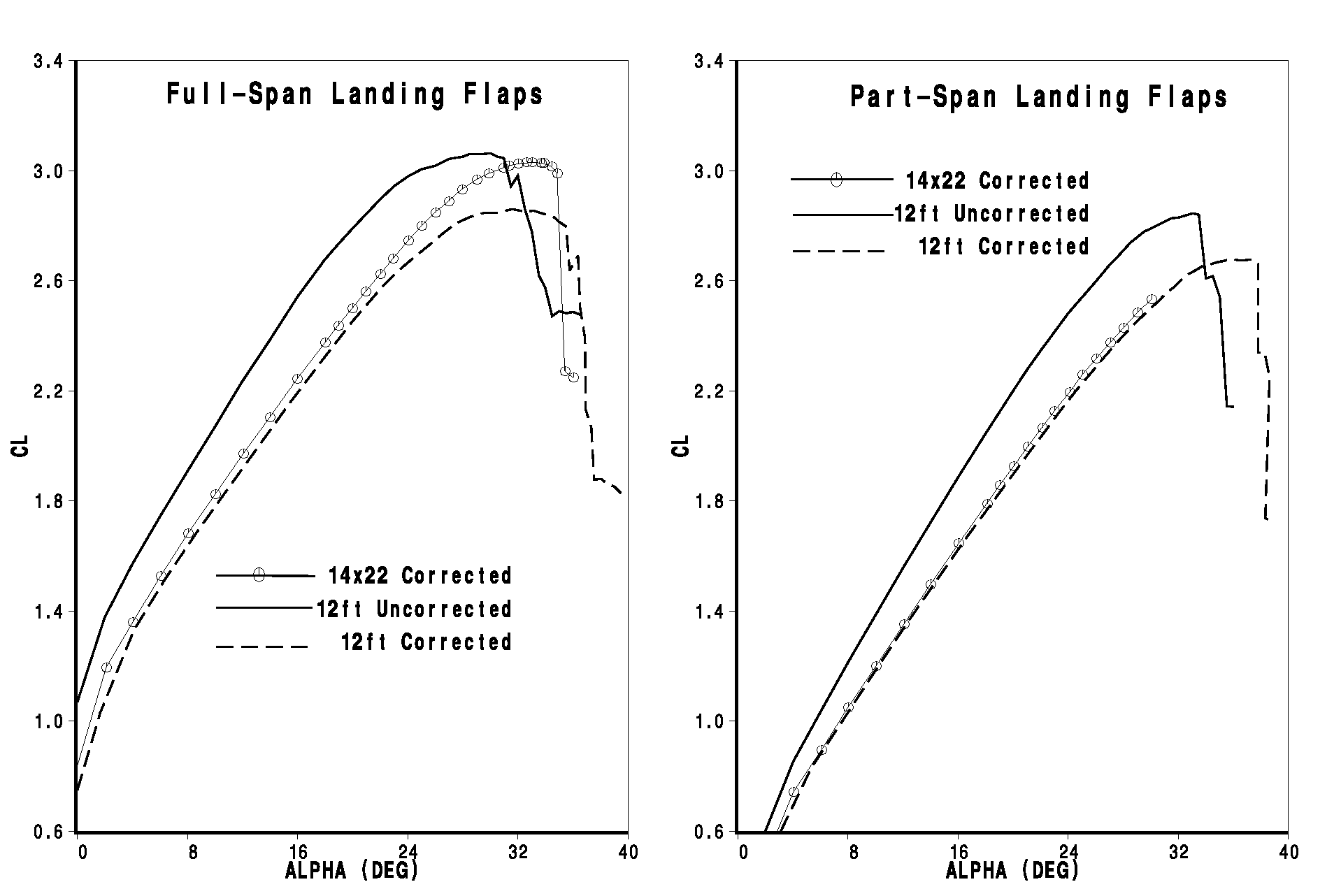Furthermore, analysis of the spanwise variation in Da
using Heyson’s method indicated significant spanwise variations,
particularly at the higher angles of attack (see figure below). This implies
that the use of a single value of Da to correct
to free-air conditions (typically at the quarter-chord) can be expected
to work only over a limited angle of attack range.

Wall corrections for the landing flaps configuration ; a) comparison
of CL; b)variation in induced alpha across the span.

Tunnel-to-tunnel comparison of lift for the full-span landing flaps
configuration.
A comparison of corrected and uncorrected data between the tests in the LaRC 14x22ft tunnel and the ARC 12ft tunnel bears out this conclusion. The above figure compares landing configuration data from the 14x22 (corrected to free-air conditions) with data from the 12ft, acquired at the same Reynolds number. The corrected lift curves are in reasonable agreement through a=22 degrees, then show substantial differences approaching CLmax.
These comparisons highlight the large uncertainty associated with wind tunnel corrections at high angles of attack. These uncertainties can be eliminated by modeling the wind tunnel walls in the CFD analysis, and comparing results with uncorrected data. Recent analysis by Rogers et al12 has demonstrated that simplified, inviscid modeling of the wind tunnel walls performs as well as high-fidelity viscous tunnel wall modeling. Their paper also contains a detailed discussion of a method for adjusting computational outflow boundary conditions to match test section Mach number.
Unless otherwise noted, all data are from the ARC 12ft entry, and are uncorrected for wind tunnel wall interference effects. A complete description of the ARC 12ft PWT (tunnel, image plane, fairing) in IGES format is available on the NASA High Lift CFD Validation Web Site. We strongly urge that any comparisons using high-Reynolds number data from the 12ft tunnel be made with computations that model the wind tunnel walls. However, recognizing that there are situations where free-air calculations may be useful (e.g. code check-out, comparison of flap effectiveness at lower alpha), 12ft data corrected using classical methods is also provided on the Web Site for a<20degrees.
return to Data Archive home page
Page Curator and NASA Official Responsible for Content
Judith A. Hannon
Last Updated
August 5, 2011